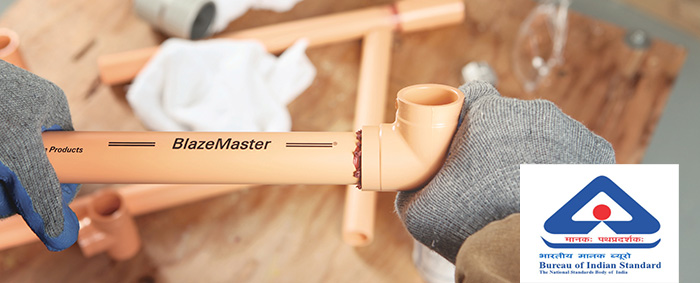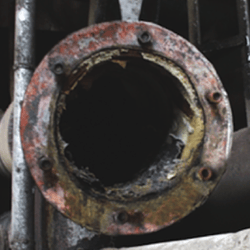Fire sprinkler system reliability is critical to the safety and security of your building and occupants. Malfunctions or piping system issues come in a variety of forms, but some of the most common include restricted water flow, blocked sprinkler heads, and leaks within the system.
Fire sprinkler system reliability is critical to the safety and security of your building and occupants. Malfunctions or piping system issues come in a variety of forms, but some of the most common include restricted water flow, blocked sprinkler heads, and leaks within the system.
Installers and building owners can avoid these problems by choosing BlazeMaster® CPVC, and referring to the latest codes and standards of practice, to perform proper maintenance.

The Bureau of Indian Standards 2021 "Design, Installation and Maintenance of Fixed Automatic Sprinkler Fire Extinguishing Systems" Code includes key revisions to BIS 15105:2021, which should be considered when installing and operating BlazeMaster Fire Protection Systems, some of which we will discuss in this blog.
Continue reading to explore some key critical issues, as well as new guidance issued under new Indian fire safety standards.
Avoid Critical Issues and Reduce Maintenance with CPVC
Many of the issues commonly seen with fire sprinkler systems today are rooted more in the materials they’re made with, rather than maintenance.
CPVC is a superior material for fire protection systems because it’s durable, relatively inexpensive, and, most importantly, is not susceptible to corrosion and scaling.
With CPVC, third party corrosion tests aren’t necessary, and general maintenance is simplified because corrosion and scaling risks are much lower.
Corrosion and Scale Buildup in Metal Piping
The most common problems facing metal fire sprinkler systems are scaling and corrosion.
Water can be corrosive to metal piping if it falls outside of a neutral pH, and impurities in the water can lead to scaling issues.
Scale is a build-up of minerals on the pipe surface. As minerals drop out of the water, and attach to the piping surface, the pipe opening constricts. This constriction limits water flow and can increase pressure loss.

Corrosion happens as charged ions within the water attract ions from the metal surface. This process can eat away parts of the metal surface, and eventually lead to pieces flaking off.
Over time, these issues can restrict water flow, weaken the piping material and joints, increase pressure loss, and cause leaks to form. In some cases, corrosion deposits can settle in sprinkler head outlets limiting how much water can be released.
BIS 16088:2012 (Specifications for CPVC Pipes for Automatic Sprinkler Fire Extinguishing System) approves CPVC as a suitable alternative to steel, describing it as “an ideal choice for any designer,” especially for its performance in environments that are naturally corrosive to steel.
Learn More About BlazeMaster® Fire Protection Systems
BlazeMaster® conducted a masterclass with industry experts in the fire safety industry, where developments and changes brought about by the BIS 15105:2021 were discussed in depth, including:
- The innovation of pipe material in fire safety
- Guidance on installing and maintaining CPVC sprinkler systems in approved occupancies, including high-rise buildings
- Ensuring the most accurate results and longevity using modern hydraulic calculation methods
Fire sprinkler system malfunction is a serious issue and risk, and one that we want to make sure you never have to deal with.
Get in contact with our team at any time for expert guidance.
